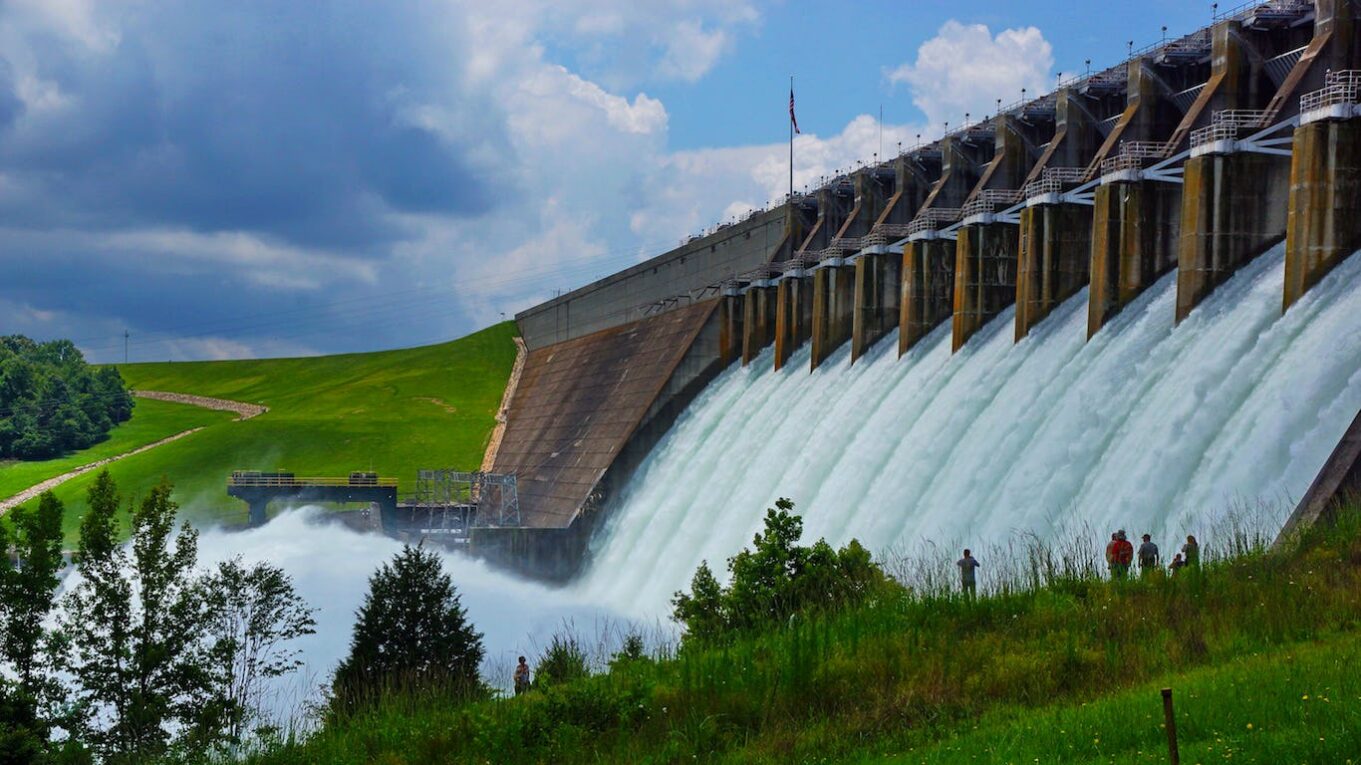Hydropower or hydroelectric power is one of the most widely used forms of renewable energy that generates electricity from flowing water. Water is a natural resource that can generate large amounts of clean energy. As rivers flow down from high altitudes, the kinetic energy of flowing water is converted into electricity through hydropower plants without producing greenhouse gas emissions.
Types of Hydropower Plants
There are mainly three types of hydropower plants distinguished based on their design and location:
Run-of-River Plants: These plants use the natural flow of the river and do not require a large reservoir for water storage. They have little to no impact on river flows as they divert a portion of the river water for power generation.
Storage Plants: Storage plants use large man-made reservoirs created by dams to store water. The water is then released through turbines as required to produce electricity. These plants have the ability to regulate water discharge and power generation over longer periods of time.
Pumped Storage Plants: Pumped storage plants pump water from a lower reservoir to an upper storage basin during low electricity demand periods to store energy. During peak hours, the water is released back to the lower reservoir through turbines to generate power. This provides reliable power for meeting peak loads.
Advantages of Hydropower
Some of the major advantages of Hydropower Generation that make it a sustainable energy source are:
Renewable Source: Hydropower utilizes the kinetic energy of flowing water which replenishes naturally through water cycles. It is a renewable source that will never run out as long as there is water flowing in rivers.
Reliable & Flexible: Hydropower can generate electricity on demand as reservoirs store large volumes of water. The power generation capacity can also be increased quickly during periods of high demand.
Low Carbon: Hydropower does not involve combustion and produces no greenhouse gas emissions. It is considered an environmentally clean form of energy.
Large Scale Generation: Large hydropower dams are capable of producing electricity on a massive utility scale of thousands of megawatts, equivalent to large coal-fired power plants.
Multi-purpose Usage: Dams also serve important non-power roles like providing water for irrigation, flood control, water supply, recreation etc along with power generation.
Low Operating Cost: Hydropower has very low fuel costs after the initial construction of the plant and is quite economical over the plant’s lifespan of 50-100 years.
Grid Stability: Hydropower provides important ancillary services like rapid load balancing and voltage regulation that maintain grid stability with integration of other variable renewable resources.
Effects on Environment and Economy
While hydropower offers numerous benefits, reliance on large dams also comes with some environmental and social impacts that need to be mitigated:
Environmental Impacts: Dams block sediment flow and river connectivity, disrupting ecosystems. It may also change downstream water flows and wildlife habitats. Proper safeguards need to implemented.
Displacement of Communities: Construction of large reservoirs results in submergence of human habitations requiring resettlement and rehabilitation of affected populations.
Emission of Methane: Decomposing organic matter in the reservoir of large tropical dams releases significant amounts of methane, a greenhouse gas many times more potent than carbon dioxide.
Economic Challenges: Initial capital costs of hydropower projects are enormous requiring huge investments. It may also act as a hurdle in the development of remote areas.
Siltation of Reservoirs: Sediment deposition over decades may reduce the storage capacity of reservoirs, affecting long term power generation if not properly managed.
However, with improved planning and adoption of environmental mitigation measures, hydropower technology can leverage its numerous environmental and economic benefits in a sustainable manner meeting humanity’s increasing energy needs.
Role of Hydropower in India
India is gifted with huge hydropower potential due to its geography and climatic conditions. As per conservative estimates, India’s total economically feasible hydropower potential is about 148 GW.
So far, India has harnessed only about 46 GW which leaves more than 100 GW untapped potential. Hydropower accounts for about 13% of India’s total installed electricity capacity.
Major hydropower producing states in India include Arunachal Pradesh, Uttarakhand, Himachal Pradesh, Jammu & Kashmir, Sikkim, Karnataka, Tamil Nadu and Maharashtra.
To meet its ambitious renewable energy targets, India has recognized hydropower development as a key priority. The government has announced many initiatives for accelerated hydropower development including:
Construction of new large hydropower projects above 100 MW capacity. Green Energy Corridors to evacuate power from remote Himalayan regions.
Mega pumped storage projects for ensuring grid stability.
A Hydropower Certificate mechanism for REC compliance.
Streamlining of clearances and incentivizing private sector investments.
Promoting small and mini hydropower projects close to thousands of MW potential.
*Note:
1. Source: Coherent Market Insights, Public sources, Desk research
2. We have leveraged AI tools to mine information and compile it

